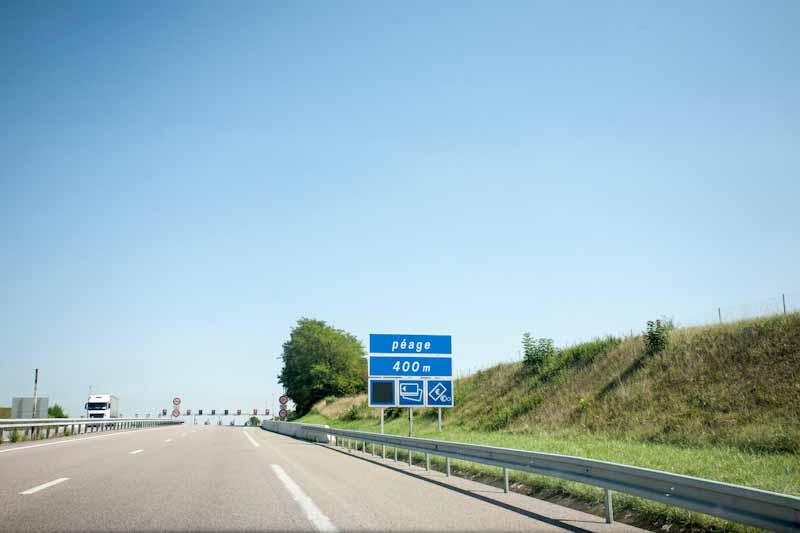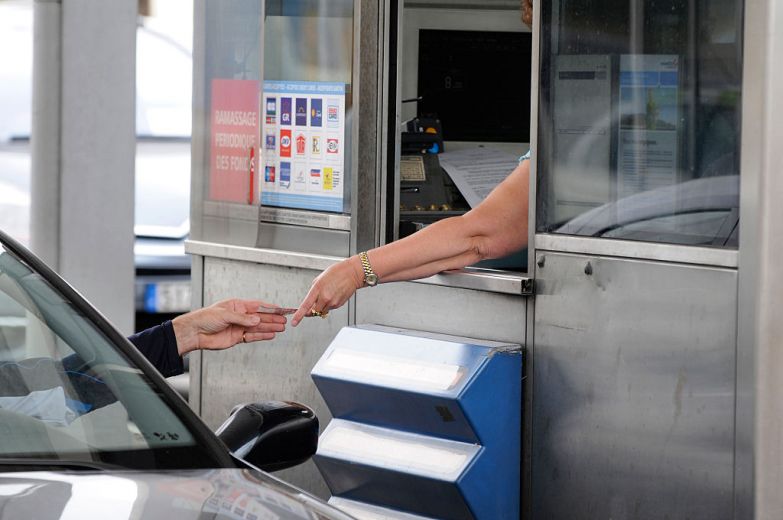Also known as toll ways or a turnpike, these roadblocks are an important part of driving in Europe from the UK.
Simply, they are controlled-access roads, where you need to pay to gain passage to the rest of the road.
These motorways are defined by the ‘A’ and proceeding number – although some of them have their own name.
This guide gives you the information you will need ahead of your next journey to France.
Toll roads in France
Toll roads in France are commonly known as Autoroutes. There are over 90 tolls across the major road network in France and it's by far the fastest and most convenient way to travel across the country by car.
If you don't wish to pay to use a toll then there a few ‘free’ motorways in France, along with a number of dual carriageways and other roads that can take you from the north to the south of the country. However, driving 'toll free' across France will add time to your journey.
Below is a map of the main toll roads in France. Ahead of your next car journey to France, check to see if any of these are on your route. If you are unsure on how to get to your next destination, visit RAC Route Planner.
How do toll roads work in France?
To use a toll road (Autoroute) in France you will be required to pay at a booth or a machine. There are several ways you can pay to use a toll road in France:
- Cash (all payments must be made in Euros)
- Card (Eurocard, Mastercard, Visa, Carte Bleue)
- Electronic account (special exit booths for vehicles with Telépéage accounts)
Maestro and Electron debit cards are not accepted.
For some tolls you will need to take a ticket at the start of the Autoroute and pay at the end. Others, you pay as you pass through.
Either insert the ticket or select payment – make the payment – take your receipt.
After this, the barrier should open, and you are free to carry on with your journey. There is often an emergency call system on the machine if it is needed and most operators speak English.
Using automated, unmanned or free-flow toll roads in France
Across France, some tolls are automated and unmanned. If you use one of these toll roads then there are a few methods of payment:
Pre-registration on the Autoroute operator's website: you can register your vehicle and your bank details
Payment within 72 hours of the journey via the Autoroute operator's website
Each Autoroute toll road is operated by its own company with its own terms and conditions around payment, so it is worth planning your route and checking their websites ahead of your journey.
An increasing number of subscription-based suppliers are appearing across the country – and it is worth doing some research as they become more commonplace in the years to come.
These are also known as ‘toll tags’ – and are available with a number of independent companies. They can also be used if you are travelling to multiple European countries.
Cost of toll roads in France
The amount you pay can vary due to what type and weight of your vehicle – in total, there are 5 categories.
Category 1 – Cars and trailers with a height of less than 2 metres and gross vehicle weight that doesn't exceed 3.5 tonnes. They may also be referred to as passenger vehicles or light vehicles.
Category 2 – Same as above but with a height of between 2 and 3 metres.
Category 3 – Vehicles (can be with a trailer) with a gross weight of more than 3.5 tonnes and a height of more than 3 metres.
Category 4 – HGVs, trucks, and larger vehicles with more than two axles, with a weight of more than 3.5 tonnes, and a height of more than 3 metres.
Category 5 – Motorbikes (can be with a sidecar) and tricycles.
If you are driving a normal family car, then you can expect to pay between €10-€50 per toll, depending on the Autoroute you are on. These are constantly updating, so it is worth preparing your route before you leave to know how much you will be paying.
- Driving in France – your complete guide
- Driving from the UK to France – all you need to know
- Top 16 tips for driving through France
- What is a Carnet de Passage en Douanes (CPD)?

Instant cover available
• 24/7 rescue at the roadside
• Help to get home if your vehicle can't be fixed
• 5 star Defaqto rated cover

French toll road signs
These are the type of signs you should look out for on French Autoroutes for tolls.

- Crit’Air clean air stickers – your guide for driving in France
- Speed limits in France – the ultimate guide
- Driving to the South of France – tips and advice
French phrases you need to know to use a toll road
So, you are packed and ready to go on your next French adventure! You know your route; you know the tolls you will be passing through – but what if you need some assistance at the toll booth?
Here, we have some common phrases that you might need.
- How much does this toll cost? – Combien coûte ce péage?
- How far until the next toll? – Jusqu'où jusqu'au prochain péage?
- Is there any traffic ahead? – Y a-t-il du trafic devant vous?
- What is the best tourist attraction nearby? – Quelle est la meilleure attraction touristique à proximité?
- Can I have a receipt please? – Puis-je avoir un reçu s'il vous plaît?
- Thank you. Have a good day! – Merci. Passe une bonne journée!
What other phrases should visitors know for when they speak to a person in the toll booth? Leave your comments below.
- Driving in Europe checklist
- Crossing the Channel – ferry or Eurotunnel?
- 10 lesser-known French road rules you’ll need to follow on your trip
Tolls across Europe
If France is your first destination on a European road trip, then beware that many other mainland nations on the continent have toll roads.
RAC Drive has a range of guides for driving laws and advice for any country in Europe. These guides will inform you if there will be any tolls on your next road trip.
Don't forget the RAC provides European breakdown cover while you're driving in Europe. And also, temporary car insurance if you're borrowing a car for the drive. If you're hiring a car, we've got you covered with our car hire excess insurance.
You should also look at our European Driving kit to make sure that you have everything you need to comply with the different driving requirements. It also includes items that can ensure your safety in case of an emergency so that you have peace of mind.
Can you travel through France without going through the tolls?
In short, yes, it is possible! However, it isn’t advisable as it could add a significant amount of time to your journey.
Although there are many toll roads across France (and continental Europe), avoiding them would mean taking a lot longer going around them on smaller roads. This would mean that you would be spending more time and money to get to your destination.
Some roads may be more picturesque, and so it may be worth it. However, if you are on your way to a specific destination, the tolls are a necessary part of your journey.
Are you driving in France this summer? What route are you taking and what advice would you give to fellow road users? Please comment below.
ETIAS – 2026
ETIAS stands for the European Travel Information and Authorisation System. It is a visa program for visitors who don’t need a Schengen visa, who want to travel to the European Union and a few other European countries.
Visitors who purchase an ETIAS will be able to enter the 26 member states of the Schengen Zone as well as Bulgaria, Croatia, Cyprus, and Romania.
This will be launching in 2026. Learn more about ETIAS here.
The RAC will keep you up to date with any developments.

Instant cover available
• 24/7 rescue at the roadside
• Help to get home if your vehicle can't be fixed
• 5 Star Defaqto rated cover











